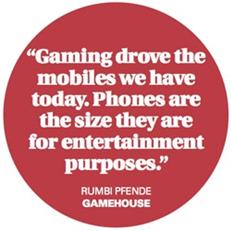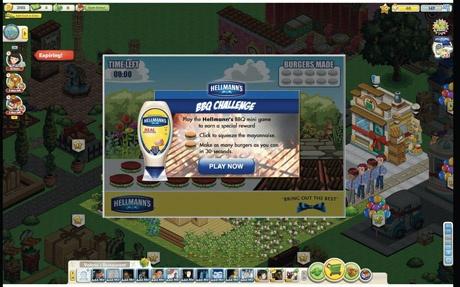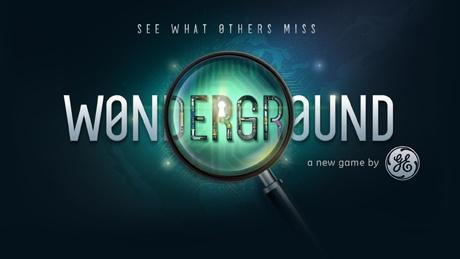Game on
Half the UK population are active gamers and the number of hours played has gone up 20 per cent. But with console play declining and mobile gaming on the rise, how can marketers make the most of this £45bn global market?
Games consoles were once must-have items for every household. The first version of the Sony PlayStation sold more than 100 million units and became a global craze on its launch in 1994, as people lapped up a new level of gaming sophistication and entertainment in their living rooms. Now Google is rumoured to be developing an Android-powered console as Sony and Microsoft launch their PS4 and Xbox One respectively. Yet despite the recent buzz about consoles, the industry’s biggest growth area is by far mobile.
The explosion of casual gaming in recent years, particularly on mobile phones, means demand for the traditional console has fallen sharply, with worldwide spending on them down 1 per cent last year despite the total gaming market rising by 6 per cent to $70.4bn (£45.6bn).
This growth is being driven by mobile gaming, which surged by 35 per cent year on year, according to the latest market study seen exclusively by Marketing Week by gaming research firm Newzoo, commissioned by games distributor GameHouse.
The gaming market’s transformation presents opportunities for brands aiming to reach highly engaged audiences. More than half the UK population – nearly 35 million people – are now active gamers, the research shows, with mobile, gaming on social networks and casual gaming websites among the fastest growing platforms. Almost half of these (44 per cent) agree that gaming is a more engaging activity than watching TV.
Of particular interest to brands and advertisers will be the increasing amount of time that consumers are spending in a gaming environment. The study shows that on an average day in the UK, people spend a total of 66 million hours playing games – a 20 per cent increase year on year.

Newzoo chief executive Peter Warman believes the rise of new platforms, as well as the simplicity and low cost of using mobile and online games, is attractive to both consumers and advertisers. “Because of smartphones and tablets, the amount of screens for playing games has doubled and so have the situations where you can do it.”
Yet despite these trends, it is difficult to identify many brands that currently regard gaming as a core part of their marketing strategy. Most gamers will be familiar with standard banner ads that pop up in or around games and take people to an advertiser’s content when they click through.
But there are doubts about the value of these ads, particularly on mobiles where advertisers have a small space to work with and where brands run the risk of annoying gamers with intrusive ads that disrupt their play. Many mobile games operate a ‘freemium’ model where such ads appear in the free, entry-level version of the game but disappear once people upgrade to the paid-for version.
Innovative brands are therefore moving away from this type of ad to focus on partnerships and integrations with games.
I Am Player, for example, which has more than 11 million users worldwide, combines first person video content with 3D gaming so that players can experience the life of a top footballer. Brands such as Nike, Red Bull and Alfa Romeo are incorporated into the game to provide an authentic ‘real world’ experience, with players receiving certain in-game advantages for interacting with those brands. Gamers have so far bought more than 6 million virtual cans of Red Bull, for example, in order to boost the performance of their players.
Gambling brand Betfred is also in the game, including video footage of the Cheltenham Gold Cup, of which Betfred is a sponsor. Players can interact with the brand through mini-games and there are incentives for players aged 18 and over to sign up for a Betfred account for chances to win in-game rewards. According to Betfred, about 25 per cent of all interactions with the brand in I Am Playr result in registrations for an account.
Betfred.com managing director Chris Sheffield explains: “[The game] is a really good way to embed our brand in something that millions of people are involved in and engage with people who might not necessarily have seen our brand before. It’s doing two things for us – it’s driving that brand awareness but it’s also driving registrations to Betfred.com.”

Hellmann’s mayonnaise featured in ChefVille
But it certainly is not plain sailing for the industry as a whole: last month FarmVille owner Zynga made 18 per cent of its 3,000-strong workforce redundant after admitting it is struggling to shift its business model to mobile gaming. This week it replaced founder Mark Pincus with Don Mattrick, currently the head of Microsoft Xbox division. The company is currently looking at ways to provide advertisers with more integrated solutions to help increase revenues. Through a deal with Universal Pictures, for example, the company has integrated characters from the new film Despicable Me 2 into its mobile and social networking game Draw Something 2.
Zynga says that more than 2 million drawings featuring the film’s ‘minion’ characters have so far been shared online, with players again incentivised through in-game rewards and currency. Previous brand integrations by Zynga include a tie-up with Hellmann’s mayonnaise that featured a branded mini-game in its ChefVille game and a ‘watch-to-earn’ campaign for Ocado where players could win in-game rewards in FarmVille by watching a video by the online grocer.
Zynga vice-president of global advertising Julie Shumaker says: “Because of the creativity and interactivity of the medium, we have an opportunity to deliver more rewarding ad experiences. That’s not just because the advertiser reaches the consumer, it’s because the consumer interacts in more meaningful ways.”
Games companies are, however, careful to meet advertisers’ needs in a way that does not detract from the gaming experience. Paul Whitehead, commercial director at We R Interactive, the company behind I Am Playr, says the games studio carefully manages its brand partnerships on a category-exclusive and territory-by-territory basis to ensure they fit well with the game.

For example, while Nike appears in all versions of the game globally, Betfred’s and Alfa Romeo’s integrations are UK-specific. Whitehead reveals that he is in talks with brands to fill other categories within I Am Playr, such as travel and mobile, and that the company is also looking to bring in brands on its new interactive music game Lyroke.
“We’ve now had a million users through the [Lyroke] platform so we’re getting to the point where we can start to approach brands,” he says.
The Newzoo and GameHouse research suggests that consumers are warming to the idea of brand involvement in games. According to the study, more than a third of UK gamers (35 per cent) agree with the statement that the ‘inclusion of brands in games adds to my overall enjoyment and makes games more realistic’, against 23 per cent who disagree and 43 per cent who are neutral.
In order to build on this trend while also exerting control over the gaming experience, a growing number of brands are setting up their own games. These can serve to support a marketing campaign or simply help to communicate a wider brand message. US technology giant General Electric (GE), for example, recently launched a game on mobile and desktop aimed at educating the public about the role its services play in everyday life.
Named Wonderground, the game is designed
in a ‘treasure hunt’ format where users are invited to explore five major US cities and unlock clues that allow them to progress. Around three-quarters of the facts that appear in the game relate to the city and its general history, while a quarter are GE facts that explain the role the company has played in the city’s development.
“The point about GE is that our technology is all around us – you often can’t see it but it is affecting our daily lives,” explains Katrina Craigwell, GE’s digital marketing manager. “There’s also a larger theme about the cities we live in and the fascinating science that surrounds us. Wonderground is all about that discovery.”
Craigwell suggests that audience acquisition for a branded game is more of a “slower burn” than other advertising formats but adds that the company is continuing to add new features in order to grow Wonderground’s audience. This includes a function for players to tweet and share in social media every time they unlock a clue, and a user-generated feature that allows people to create and upload their own missions. In addition, GE is experimenting with mobile technology so that people can use their phones in some areas of the cities to scan their surroundings and access content in the game.
“We’ve just launched so we’re discovering new ways for the game to be used,” she adds. “We’re seeing players go to the game, come back and spend 10 or 15 minutes in the game, which is probably one of our highest times on site for our social and content platforms.”

GE decided to launch its own game - Wonderground - on mobile and desktop so that people could subtly learn about its services
Games commissioning editor at Channel 4 Colin Macdonald agrees that it is a big challenge for brands to build up a following for new games in today’s crowded marketplace. He oversaw the launch of The Snowman and the Snowdog game last Christmas, which was released in the UK to coincide with Channel 4’s broadcast of the animation film. The game proved a huge success and reached number one in the free iPad apps chart after receiving more than a million downloads in three weeks.
“There are 900,000 different apps on the App Store and every developer has the same problem which is discoverability,” says Macdonald. “We have the advantage of being able to use the promotional aspects of Channel 4 – the TV ads, the website and the celebrities – to give the game a massive punt in terms of chart position.”
Macdonald says that although he believes “it is possible to make a game about anything”, there are certain themes and structures that work better than others. For example, Channel 4 has launched games around its TV gameshows such as the Million Pound Drop to reach a wider demographic.
Last year, the channel also decided to use an online game as the only route through which people could apply to appear on its new gameshow The Bank Job. Jody Smith, Channel 4’s multiplatform commissioning editor for entertainment and comedy, says this approach was designed to attract a new group of people to the gameshow format, as well as to raise awareness about the programme through digital channels.
“We wanted really clever, tactical people to apply and we thought that was probably people who play a lot of casual games,” he adds. “It was really successful for us – we had vastly more people apply for this programme [than for others], even though the level of entry was harder, because it wasn’t just filling in an application form, you had to achieve something in the game. We had maybe three or four times the number of people you’d expect to apply for a new show.”
But for all the opportunities that games present to brands, there remains no clear roadmap for how marketers should approach the industry, particularly while it is in flux. Last month King, the gaming company behind the popular Candy Crush Saga games, announced that it will no longer run any forms of advertising on its platforms once current contracts run out.
The company said it had taken the decision to shut down its ad business because in-game transactions now account for the majority of its revenue growth and because it wants to dedicate all its attention to the gaming experience. “It’s a question of focus,” says King chief marketing officer Alex Dale. “We think that to create the best possible user experience requires us to focus the development resources and the game design resources on the actual games themselves.”
While gaming companies have mixed views on the benefit of brand involvement in gaming, it is clear this fast-paced industry has the potential to offer an audience of engaged consumers – something which Rovio, the Finnish developer behind the world’s most popular mobile game franchise, Angry Birds, is capitalising on. The business is making the transition from gaming company to all-round media owner so its brand partnerships extend beyond games and into the world of product licensing and new content platforms such as the Angry Birds movie, which is due out in 2016.
In mid-March, Rovio also launched a cross-platform video channel to distribute animated content direct to fans. Brands such as Sony Pictures, game publisher Activision and BlackBerry are already signed up to advertise through the channel.
Rovio global head of brand partnerships and advertising Michele Tobin believes that brands are attracted to this channel because “advertisers want to be where engaged consumers are”.
But marketers shouldn’t get carried away with the attractive number of gamers they could potentially reach. Being a relevant brand in gaming is challenging and those who will succeed in this world will have to invest time and money to make sure this audience is engaging with the brand as well as the game.









